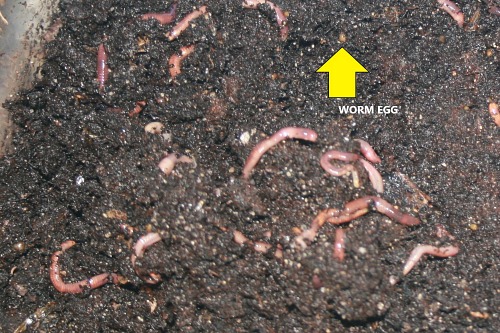Stock Up on Supplies with Lake Hickory Bait for Your Next Adventure
Stock Up on Supplies with Lake Hickory Bait for Your Next Adventure
Blog Article
The Extraordinary Globe of Red Wigglers: Boost Your Dirt Fertility Today
The role of red wigglers, or Eisenia fetida, in boosting dirt fertility is a topic of expanding interest among gardeners and agricultural professionals. These tiny yet efficient microorganisms transform organic waste into valuable worm spreadings, considerably enhancing dirt health and wellness and advertising lasting practices. As we explore the benefits of vermicomposting and the functional steps to develop an efficient worm container, the possible influence of these worms on your horticulture success becomes progressively apparent. Understanding the nuances of their care and application may simply alter the way you approach soil administration. What insights can be gained from integrating these remarkable creatures right into your horticulture regimen?
Recognizing Red Wigglers
Red wigglers, scientifically understood as Eisenia fetida, are a types of earthworm that play a crucial duty in improving dirt fertility. These worms thrive in organic-rich environments, such as compost heap and rotting plant product, where they consume natural waste and eliminate nutrient-dense spreadings. Their distinct anatomy, including a segmented body and a clitellum, enables them to duplicate quickly and efficiently procedure large quantities of raw material.

The eco-friendly relevance of red wigglers expands past simple waste processing; they add to the dirt food internet, fostering a varied neighborhood of microorganisms that even more improve dirt health and wellness. Comprehending the biology and habits of red wigglers is important for utilizing their complete capacity in lasting agriculture and gardening methods.
Benefits of Vermicomposting
(Red Wiggler Express)Taking advantage of the power of red wigglers with vermicomposting deals various benefits that dramatically enhance soil health and wellness and fertility. One of the main advantages is the production of nutrient-rich worm spreadings, which are an excellent all-natural plant food. Red Wiggler Express. These castings include vital nutrients like nitrogen, phosphorus, and potassium, promoting robust plant development and boosting crop yields
The visibility of worm spreadings improves soil structure, enabling for better water retention and water drainage. Red wigglers assist damage down natural matter, speeding up decomposition and reusing nutrients back right into the soil.
Vermicomposting additionally cultivates microbial task, which is crucial for a healthy and balanced dirt environment. Beneficial microorganisms flourish in the existence of worm spreadings, helping in the failure of organic materials and boosting nutrition schedule to plants.
Last but not least, vermicomposting offers as a reliable waste management option, reducing garbage dump waste by reusing kitchen scraps and various other organic materials. This not just contributes to environmental sustainability but additionally promotes a circular economy within gardening and agriculture.
Just How to Establish a Worm Container
Establishing a worm container is a simple process that can significantly boost your composting efforts. Begin by selecting a proper container, which can vary from a readily available worm bin to a straightforward plastic or wooden box (Red Wiggler Express). Guarantee the container has sufficient air flow; small holes in the cover and sides will help with air circulation
Following, produce a bed linen layer to provide a comfy atmosphere for the red wigglers. This can be made from shredded paper, cardboard, or coconut coir, moistened to a moist, sponge-like uniformity. Load the bin to about one-third full with this bed linen material.
As soon as the bed linens is prepared, it's time to introduce the worms. Red wigglers flourish in organic waste, so area them carefully onto the bed linen. Cover the worms with a light layer of added bed linens to help them acclimate.
Feeding Your Red Wigglers
Providing the best food for your red wigglers is crucial for their health and wellness and the efficiency of your composting system. Red wigglers my sources flourish on a diverse diet regimen, mainly being composed of natural products such as vegetables and fruit scraps, coffee grounds, and shredded paper. These products not just provide essential nutrients yet additionally contribute to the microbial activity in the worm container, which is crucial for the worms' digestion.
It is very important to stay clear of certain foods, such as milk products, oils, and meats, as these can draw in bugs and create unpleasant odors. Furthermore, citrus peels and extremely spicy foods should be limited as a result of their possible to harm the worms. A well balanced technique to feeding involves checking the amount of food presented to the container, making sure that it is eaten within a reasonable time frame to avoid excess waste accumulation.
To promote optimal food digestion, it is useful to cut or shred larger food items prior to adding them to the bin. This technique increases the surface for microbial activity, helping with quicker decomposition and boosting the general efficiency of your composting system. Regularly observing the worms' feeding practices will help you change their diet as essential.
Using Worm Castings in Your Garden

(Red Wiggler Express)Integrating worm castings into your garden can be accomplished by mixing them right into the soil or utilizing them as a top clothing. The slow-release nature of these spreadings makes certain that nutrients are available to plants over a prolonged duration, minimizing the demand for synthetic plant foods. Additionally, worm spreadings have beneficial bacteria that advertise healthy soil communities, improving the general strength of your yard.
To optimize the benefits, purpose to use around one part worm castings to three components soil in your growing beds. Normal applications can result in improved plant yields and healthier plants, making worm castings an important resource for both amateur and seasoned gardeners alike. By utilizing this all-natural change, you can grow a growing garden while adding to sustainable gardening methods.
Conclusion
In conclusion, red wigglers exhibit the crucial function of vermicomposting in improving dirt fertility. Their ability to transform organic waste right into nutrient-rich castings significantly enriches soil framework and supports microbial diversity.
Report this page